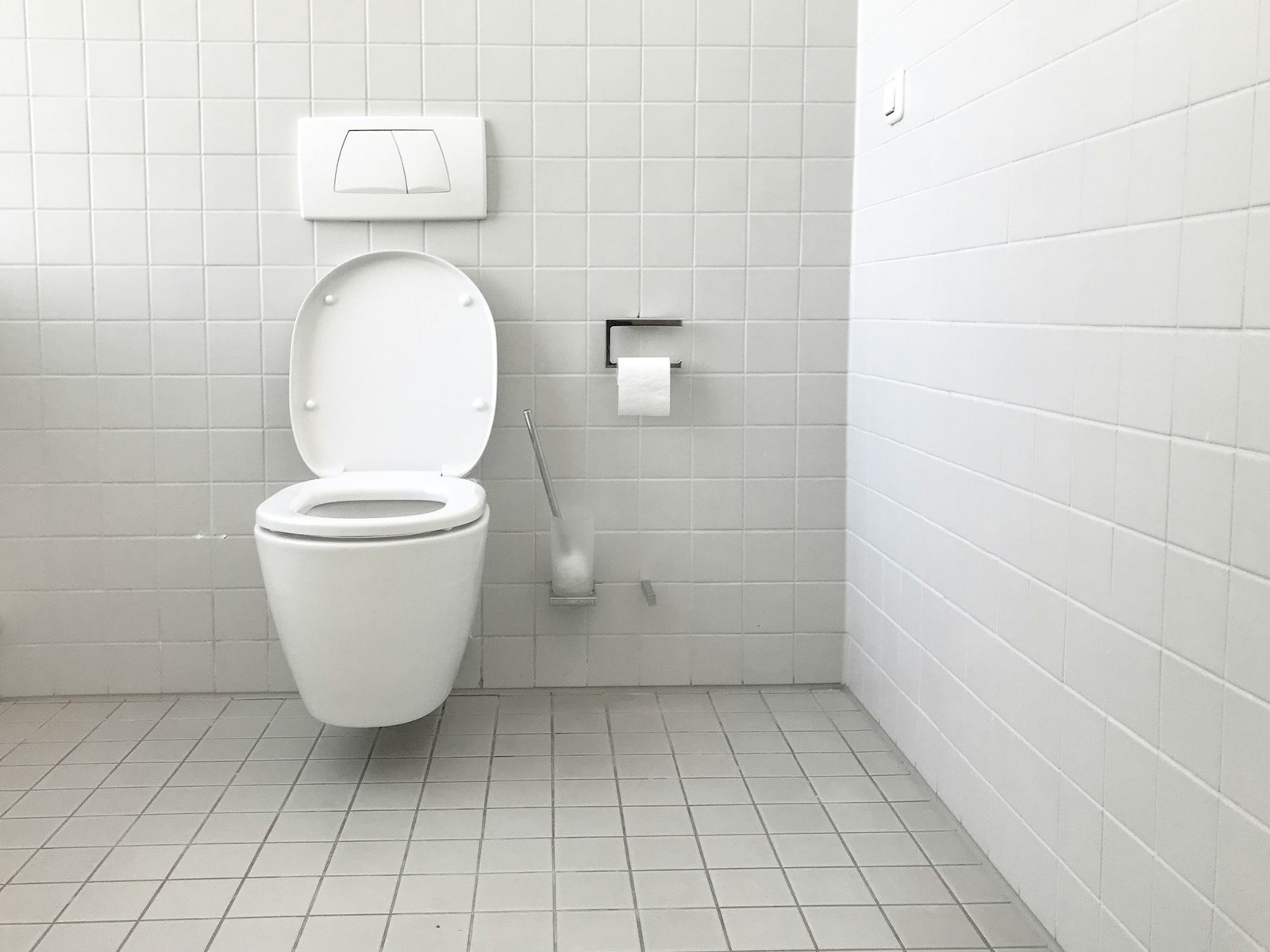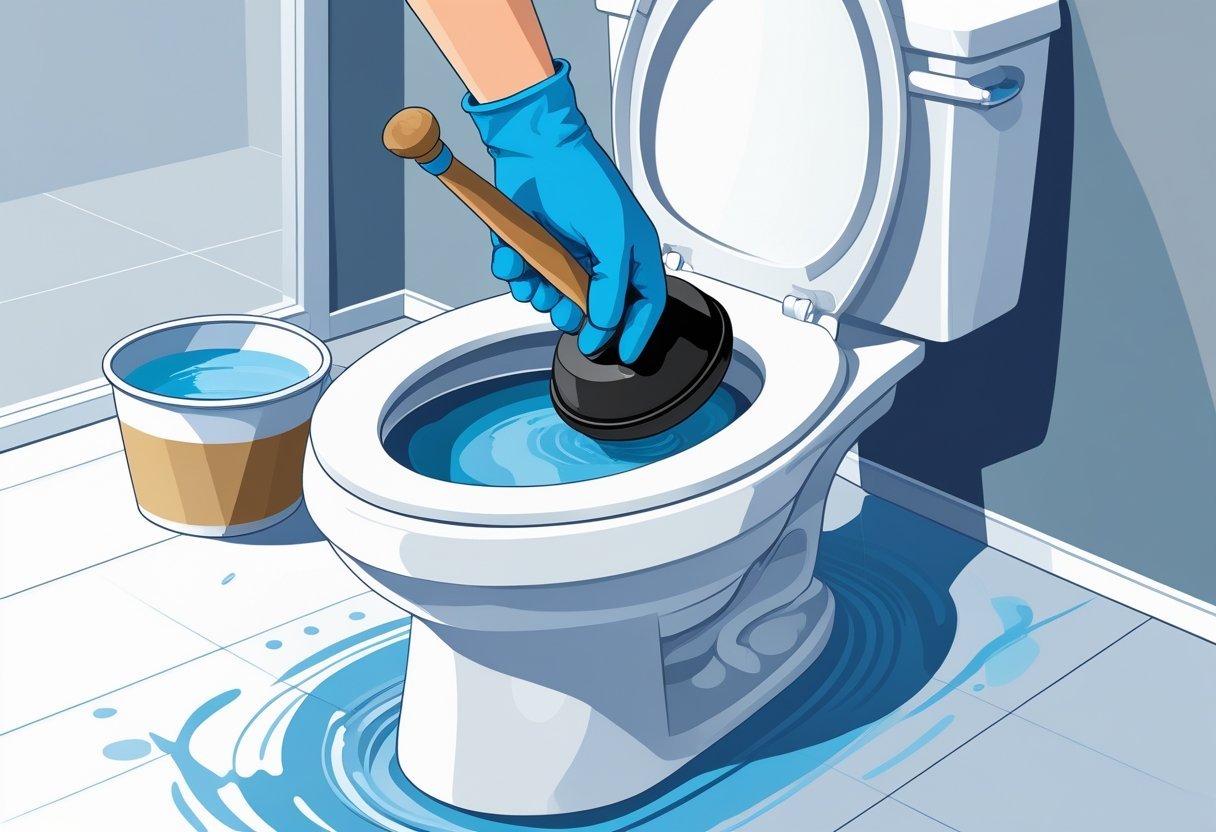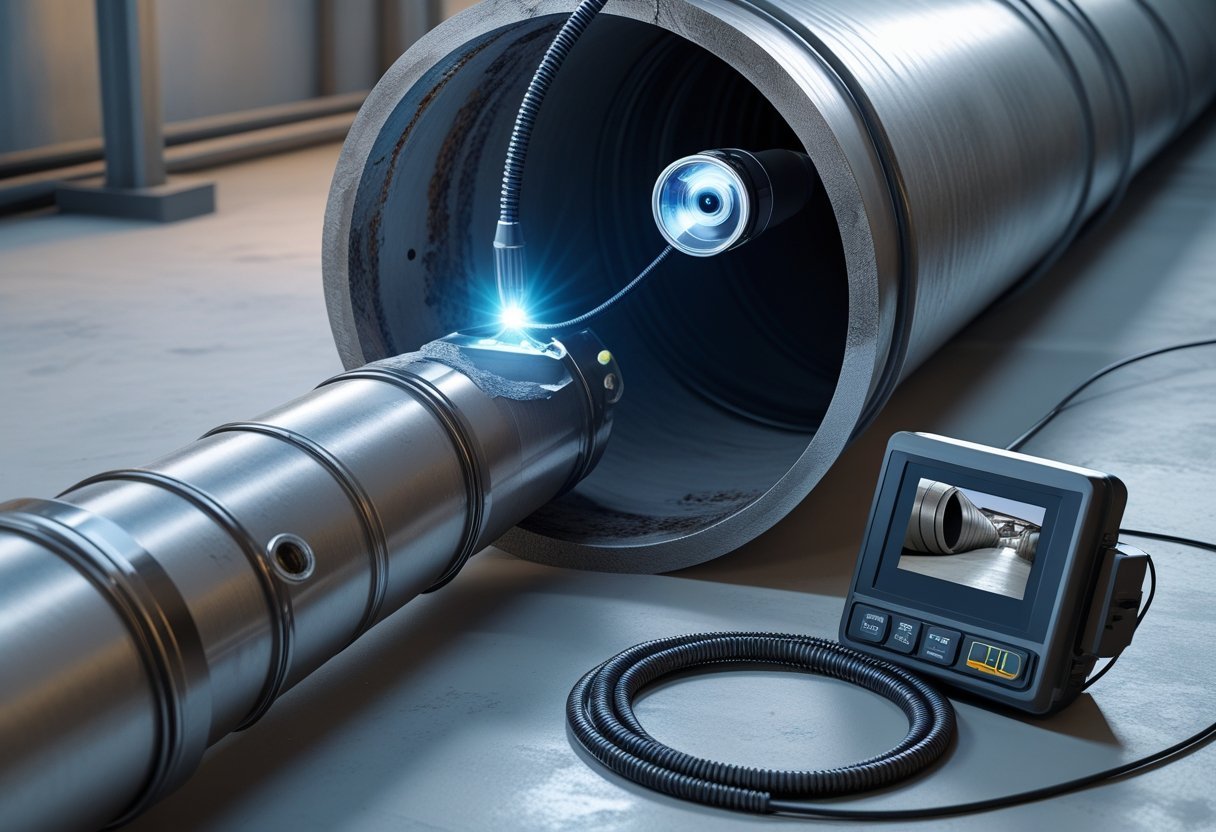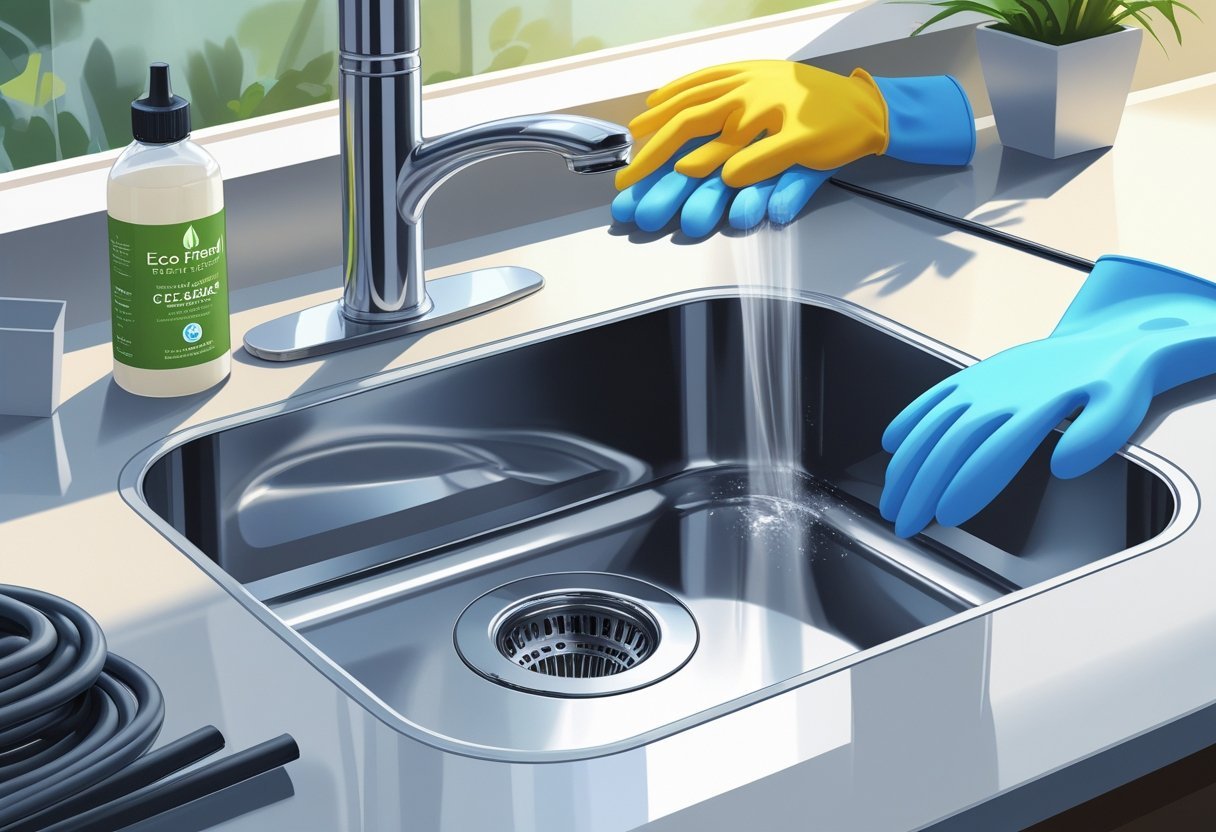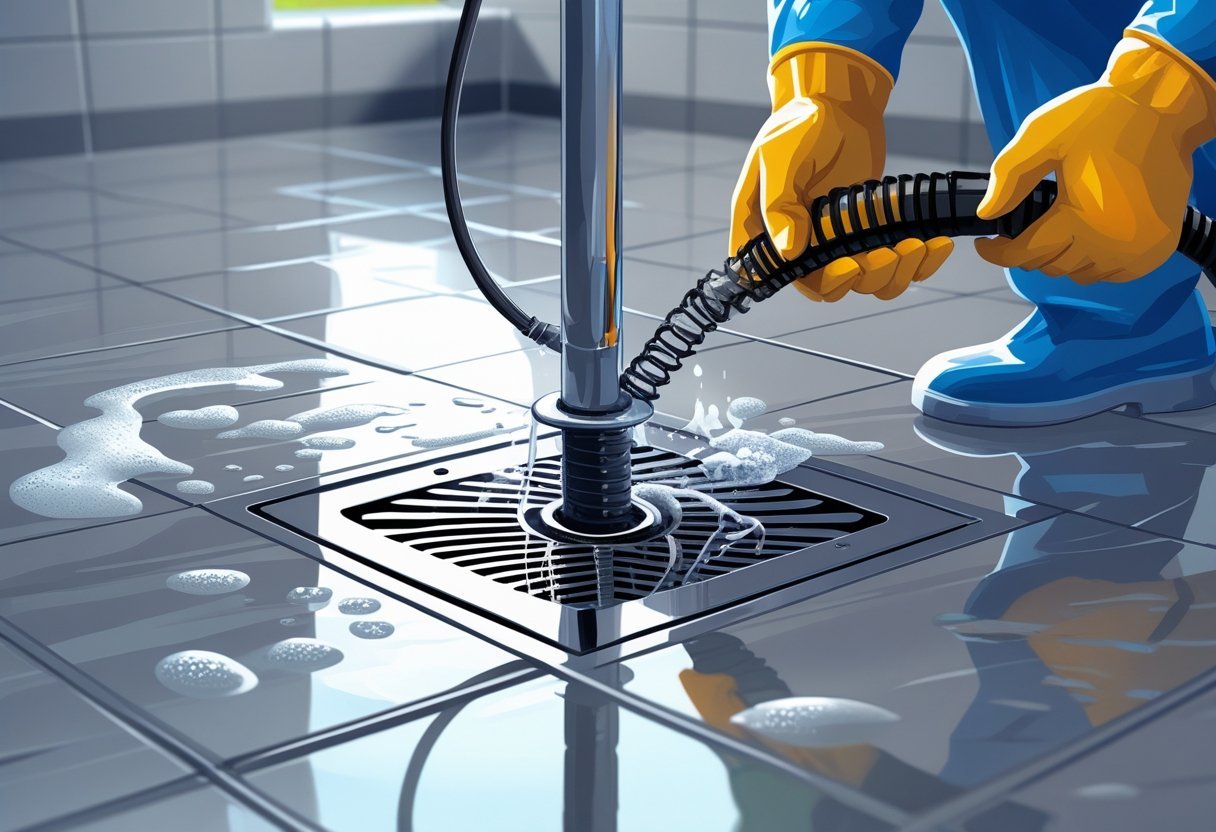Dealing with a clogged sink drain can be frustrating, but maintaining a clean and functional drain can prevent many issues. To clean your sink drain effectively, consider using simple techniques like boiling water, baking soda, and vinegar to clear debris and odors. These natural solutions can be both effective and easy to use, ensuring that your sink stays fresh and clear.
If the problem persists or you’re not comfortable tackling it yourself, professional assistance is just a call away. Large View Plumbing & Heating offers expert plumbing services in North Shore, Massachusetts, ensuring that any stubborn clogs are handled efficiently. With over 10 years of experience, their knowledgeable team prioritizes quality and customer satisfaction.
Regular maintenance is key to avoiding major plumbing issues in the future. By implementing some basic cleaning practices for your sink drain, you can save yourself time and hassle down the line, all while relying on the expertise of professionals like Large View Plumbing & Heating for those tougher jobs.
Essential Preparations Before Cleaning
Before you begin the process of cleaning your sink drain, it’s crucial to ensure you are well-prepared. Proper preparations can significantly enhance the efficiency of your cleaning routine.
Gather Necessary Supplies
Start by collecting all the supplies you will need for cleaning your sink drain effectively. Essential items include rubber gloves to protect your hands from any debris or cleaning agents. Gather a microfiber cloth or a rag for wiping down surfaces and handles.
Other important supplies are baking soda and vinegar to help eliminate odors, along with boiling water to flush out any remaining particles. If you’re dealing with a porcelain sink or stainless steel, having an appropriate cleaner for the material will ensure no damage occurs while cleaning.
Clear the Area Around the Sink
Before getting started, make sure to clear everything from around the sink. Remove any food items, dishes, or cleaning products that may clutter the workspace. This step will provide you with a safe environment to work in without the risk of spills or accidents.
If you have a kitchen or bathroom with a lot of items near the sink, take the time to organize them. Proper organization not only makes cleaning easier but keeps you focused on the task at hand.
Safety Precautions and Protective Gear
Safety should always be your top priority when cleaning. Wear rubber gloves to protect your skin from harsh chemicals or any grime you might encounter. If you’re sensitive to strong odors, consider putting on a mask to minimize exposure to unpleasant smells, especially when using vinegar or other cleaning products.
Be cautious of slippery surfaces; a wet floor can lead to accidents. Keep your area dry and be mindful while handling boiling water to avoid burns. Following these precautions ensures that your cleaning process is safe and efficient.
For plumbing solutions and tips, consider reaching out to Large View Plumbing & Heating, who can assist you with any plumbing or maintenance needs you may encounter during your cleaning efforts.
Step-By-Step Methods to Clean a Sink Drain
Cleaning your sink drain effectively involves several straightforward methods. By using common household items and following a structured approach, you can maintain a clear drain and prevent unpleasant odors.
Remove Debris and Drain Stopper
Start by carefully removing the drain stopper. Depending on the type, this may involve simply lifting it out or unscrewing it. Once removed, clear away any visible debris, such as hair, food particles, and grime.
Use your fingers or a small tool like a toothbrush to dislodge stubborn buildup. This step helps ensure that subsequent cleaning methods are more effective. Once you’ve cleared the area, rinse any debris away with hot water.
Reattach the drain stopper after you finish, ensuring it fits snugly to prevent future clogs.
Flush With Hot Water
Next, boiling or very hot water can be your best ally for clearing minor clogs. Carefully boil water on the stove or in a kettle. While it heats, ensure all the drain openings are clear and prepare to pour.
Once the water is boiling, pour it directly down the drain in stages, allowing it to work through the pipes. Hot water helps dissolve fats and other gunky buildups effectively.
Repeat this process a couple of times if necessary. This method works well in both kitchen and bathroom sinks, promoting flow and reducing odors.
Clean With Baking Soda and Vinegar
Combine baking soda and vinegar for a powerful natural cleaner. Begin by pouring about half a cup of baking soda directly down the drain. Follow this with an equal amount of distilled white vinegar.
You’ll notice a fizzing reaction—this is the mixture at work. Allow it to sit for 15-30 minutes. This duration enables the solution to break down built-up grime and deodorize the drain.
After the wait, flush with hot water to remove any remaining residue. This method is safe and effective, making it suitable for regular maintenance.
Use Dish Soap and Boiling Water
For greasy clogs, use liquid dish soap along with boiling water. Start by pouring about a quarter cup of dish soap down the drain. Swirling it around will help lubricate and break down stubborn grease.
Next, pour boiling water directly into the drain. This combination can dissolve gunky residue and help restore flow.
For best results, you might want to repeat this step a couple of times. Regular use of this method not only keeps the drain clear but also minimizes unpleasant odors.
If you need further assistance or have persistent issues, consider reaching out to Large View Plumbing & Heating. Their expertise ensures that your plumbing needs are met efficiently.
How to Clear Clogs in Sink Drains
Clearing clogs in sink drains can often be accomplished using simple methods. Understanding how to address minor clogs, utilize a plunger or drain snake, and remove the P-trap will help you effectively manage this common plumbing issue.
Addressing Minor Clogs With Natural Solutions
For minor clogs, natural solutions can be both effective and environmentally friendly. Baking soda and vinegar is a popular method. Pour a cup of baking soda down the drain, followed by a cup of vinegar.
Let this mixture sit for about 30 minutes, then flush with hot water. This combination can help break down debris like grease and hair. Alternatively, a kettle of boiling water can be poured directly into the drain to help dissolve food particles.
These methods are typically safe for both kitchen sink and bathroom sink drains, and they minimize potential damage to your plumbing.
Using a Plunger or Drain Snake
If natural solutions don’t work, a plunger can effectively clear clogs. First, fill your sink with a few inches of water to ensure a good seal. Position the plunger over the drain and push down firmly before pulling up sharply. Repeat this action multiple times to generate the suction needed to dislodge the clog.
Alternatively, a drain snake offers a more mechanical approach. Insert the snake into the clogged drain and twist it to catch debris. Pull the snake out slowly to remove the material. This method is effective for serious clogs that natural solutions cannot address.
Removing and Cleaning the P-Trap
If your sink remains clogged after using a plunger or drain snake, the problem may lie within the P-trap. To access it, place a bucket beneath the trap to catch any water or debris. Use a wrench to loosen the slip nuts on both sides of the P-trap and carefully remove it.
Once removed, clean out any blockage inside the trap, which often contains hair, grease, or other debris. Rinse the P-trap with hot water before reattaching it. Ensuring the P-trap is clear will help maintain proper drainage in your sink. For complex plumbing needs, consider consulting professionals like Large View Plumbing & Heating, who are dedicated to delivering quality service in North Shore, Massachusetts.
Deodorizing and Addressing Odors From Drains
Dealing with odors from your drains can be unpleasant, but effective methods exist to combat these smells. Utilizing common household ingredients can help you eliminate odors and keep your drains fresh.
Combat Smelly Drains With Household Cleaners
You can tackle stubborn odors using several household items. Begin with baking soda and apple cider vinegar. Pour half a cup of baking soda down the drain, followed by half a cup of vinegar. Let it fizz for about 15 minutes and then flush with hot water.
Another effective option is lemon. The citric acid helps deodorize. Squeeze lemon juice and pour it down the drain or chop the peel and run it through your garbage disposal if applicable.
For more persistent smells, you might consider bleach or hydrogen peroxide. Use them sparingly to avoid potential damage to your plumbing. Mix a small amount with water, pour it down the drain, and let it sit for a while before rinsing.
Eliminate Bacteria and Soap Scum
Bacteria and soap scum are often the culprits behind unpleasant odors. To address these, use a combination of borax and coarse salt. Pour a cup of borax mixed with half a cup of coarse salt down the drain, followed by boiling water. This mixture helps eliminate buildup.
Ice cubes can also assist in cleaning your disposal. Run a batch through your garbage disposal to dislodge any food particles and help remove odors.
Regular maintenance is key. Large View Plumbing & Heating recommends a monthly cleaning routine to keep bacteria and soap scum in check, ensuring your drains remain odor-free.
Special Considerations for Different Sink Types and Disposals
Knowing how to clean and maintain various sink types and their disposals is essential for keeping plumbing systems functioning efficiently. Each type requires specific techniques to prevent clogs and ensure longevity.
Tips for Kitchen Sinks
In kitchen sinks, common culprits like fat, grease, and coffee grounds can lead to significant clogs. Start by avoiding putting these substances down the drain. Instead, dispose of them in the trash.
For routine maintenance, you can use a mixture of baking soda and vinegar. Pour half a cup of baking soda followed by half a cup of vinegar down the drain. Allow it to sit for 15 minutes, then flush with hot water. This helps break down any buildup.
For more persistent drains, consider using a plumber’s snake. It can reach deeper blockages in PVC pipes. If you’re unsure or face a severe clog, contacting professionals like Large View Plumbing & Heating is an excellent choice for prompt service.
Cleaning Bathroom Sink Drains
Bathroom sink drains usually encounter hair and soap residue. You can start by removing the drain stopper to access the area better. Use your fingers or a pair of tweezers to pull out any visible debris.
To clean, mix equal parts baking soda and white vinegar. Pour this mixture into the drain and wait for about 10 to 15 minutes. Then rinse with hot water for effective cleaning. This will help dissolve soap scum and hair.
Regularly flushing your bathroom sink with hot water can prevent future clogs. If the issue persists, consulting a professional from Large View Plumbing & Heating can provide a viable solution.
Maintaining Garbage Disposals
Keep your garbage disposal in top condition by regularly running cold water whenever you use it. This helps flush down waste, especially after processing items like vegetable scraps.
To minimize odors, consider using ice cubes and lemon peels. Run the disposal with these items occasionally; they can clean the blades and leave a fresh scent. Avoid putting fibrous foods, such as celery or artichokes, into the disposal as they can lead to jams.
If you notice any strange noises or smells, it may be time for professional maintenance. Large View Plumbing & Heating offers services to keep your garbage disposal functioning efficiently and safely. Regular checks can save you from costly repairs down the line.
Preventative Maintenance and Routine Cleaning
Maintaining a clean and functional sink drain requires consistent effort. Regular cleaning routines and preventative measures can significantly reduce the risk of clogs and build-up in your plumbing system. Here’s how to approach this task effectively.
Weekly and Monthly Cleaning Best Practices
To keep your sink drain in top shape, develop a cleaning routine. Weekly cleaning can involve simply rinsing out the sink with hot water to help dissolve any minor build-ups. You can also apply a mixture of baking soda and vinegar. Pour half a cup of each into the drain, let it sit for 30 minutes, and then flush it with hot water.
Monthly maintenance should be more thorough. Consider using a biological drain cleaner, which can help eliminate organic materials. Avoid harsh chemical drain cleaners, as they may damage your pipes. Keep your drains odor-free and flowing smoothly by establishing these habits. Should issues persist, do not hesitate to reach out to experts at Large View Plumbing & Heating for assistance.
Preventing Future Clogs and Build-Up
Preventing clogs starts with mindful usage. Avoid putting fibrous foods, grease, and large food particles down the drain. Instead, use a strainer to catch debris before it enters the plumbing system.
You can also proactively treat your drains with a baking soda and vinegar solution once a month. This method effectively breaks down build-up and keeps your drains fresh. Regularly inspect the sink trap and remove any accumulated hair or gunk. This simple practice can save you from more significant plumbing hassles later on.
When to Call a Plumber
If you notice persistent drainage issues despite your preventative efforts, it might be time to call a plumber. Signs include frequent clogs, unpleasant odors, or slow drainage. These can indicate more severe underlying problems, such as damaged pipes or tree root intrusion.
Avoid delays in addressing these issues. Contact Large View Plumbing & Heating to get a professional assessment. With their expertise, you can ensure your plumbing system is functioning optimally, allowing you to enjoy a hassle-free home environment.
Frequently Asked Questions
This section addresses common inquiries related to cleaning sink drains effectively. You will find specific methods to tackle odors, clogs, and maintenance tasks associated with sink drains.
What steps are involved in cleaning a bathroom sink drain effectively?
Start by removing any visible debris from the sink. Use a plumbing snake or a bent wire hanger to reach deeper clogs. Pour a solution of vinegar and baking soda into the drain to break down buildup, followed by hot water to flush it all out.
How can one eliminate odors from a kitchen sink drain?
To eliminate odors, pour a cup of baking soda followed by a cup of vinegar down the drain. Let it sit for about 30 minutes, then flush with hot water. Regular maintenance with this method will prevent unpleasant smells.
What is the best method to remove hair from a sink drain?
Use a drain snake or a hair removal tool specifically designed for this purpose. Insert it into the drain and rotate to catch hair strands. Pull it out gently to avoid damaging the plumbing.
Can baking soda be used to clean sink drains and how should it be applied?
Yes, baking soda is effective for cleaning sink drains. Sprinkle half a cup into the drain followed by an equal amount of vinegar. Let it fizz for several minutes, then rinse thoroughly with hot water.
What’s the process for cleaning a sink drain plug without causing damage?
Remove the plug by twisting or pulling it out, depending on your sink type. Clean it with a mixture of baking soda and vinegar, then rinse it well. Avoid abrasive cleaners that can scratch the surface.
How do you clean the trap under a sink drain?
Place a bucket under the trap to catch any water. Unscrew the trap and remove it carefully. Clean it with a brush and soapy water, then reassemble it and check for leaks. If you’re unsure, consider contacting professionals like Large View Plumbing & Heating for assistance.

